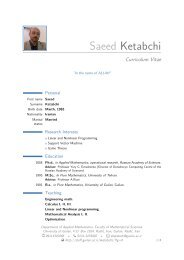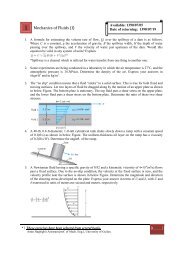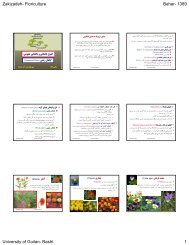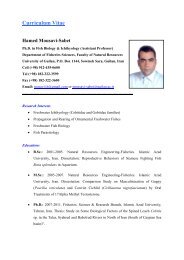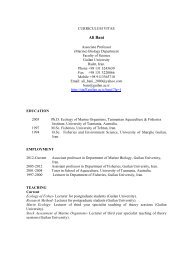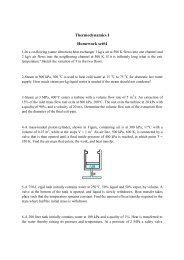Medical Tourism in Developing Countries
Medical Tourism in Developing Countries
Medical Tourism in Developing Countries
- No tags were found...
Create successful ePaper yourself
Turn your PDF publications into a flip-book with our unique Google optimized e-Paper software.
Inequalities <strong>in</strong> Health Care ● 177A dual medical care market also causes “crème skimm<strong>in</strong>g,” a situation<strong>in</strong> which those who need less, but can pay more, are served at the expenseof those who need more but cannot pay. Two seem<strong>in</strong>gly contradictory trendsare relevant <strong>in</strong> this respect. Public hospitals, especially those with good reputationsfor their associations with research establishments, are often overusedby the rich (who have other options). At the same time, even those who havepublic <strong>in</strong>surance prefer to go to the private sector because they believe thequality is higher (and, often, it is also more available).The dual medical system exists not just between rich and poor patients,but also between urban and rural regions. Indeed, health care <strong>in</strong> rural areas<strong>in</strong> all countries under study is <strong>in</strong>ferior to that <strong>in</strong> the urban areas.Government facilities are of lower quality, there are fewer private sectorchoices, the highest quality medical personnel are drawn to the cities, andsophisticated medical technology is less likely to reach remote areas. Thisimbalance between urban and rural health care is also reflected <strong>in</strong> spend<strong>in</strong>gon health care. 26In addition, the dual system extends to foreigners who happen to be <strong>in</strong>a develop<strong>in</strong>g country and become ill enough to require unplanned medicalattention. They then compete with locals for access to health care and, asDeborah McLaren po<strong>in</strong>ts out, to the extent that doctors exist, they are morewill<strong>in</strong>g to treat foreign tourists. 27In develop<strong>in</strong>g countries that pursue medical tourism, both the privateand the public sectors have come under scrut<strong>in</strong>y and have been criticizedfor focus<strong>in</strong>g on the rich rather than the poor. Criticism has been especiallyvirulent aga<strong>in</strong>st Cuba, where only one-fourth of the beds <strong>in</strong> CIREN(the International Center for Neurological Restoration <strong>in</strong> Havana) are filledby Cubans, 28 and where so-called dollar pharmacies provide a broader rangeof medic<strong>in</strong>es to Westerners who pay <strong>in</strong> foreign currency. 29 The Cubanmedical system has been described as medical apartheid, because it makeshealth care available to foreigners that is not available to locals. 30Accord<strong>in</strong>g to table 7.2, health-care <strong>in</strong>equalities are perceived to be quitehigh. Out of 59 countries ranked with respect to perceptions of <strong>in</strong>equality,India is ranked 57th. Only one, Costa Rica, is ranked <strong>in</strong> the 20s (27th),higher than the United States.Crowd<strong>in</strong>g In of Public Health<strong>Medical</strong> tourism can crowd <strong>in</strong> public health, namely it can improve andexpand public health care. A vibrant and successful medical tourism <strong>in</strong>dustrygenerates economic growth that <strong>in</strong> turn results <strong>in</strong> greater national andpersonal <strong>in</strong>come. If people on the whole have more <strong>in</strong>come, they can afford






